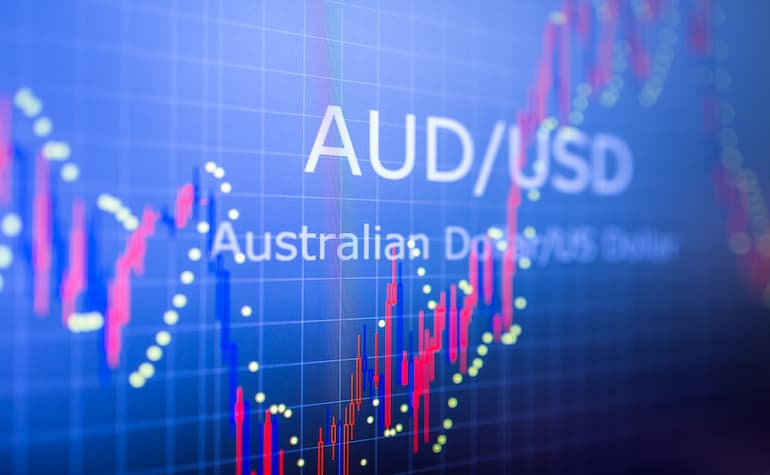市场资讯及洞察
%20(1).jpg)
本来今天想聊聊澳洲央行副行长最近公开谈到的有关澳洲有可能陷入经济低速增长的怪圈的问题,但是想想过去几篇文章都是说澳洲的,自己都觉得有点过于多了。但是很多内容不是我不想说,说国内经济情况,就怕你懂的,说欧美呢,估计大家也没啥兴趣看,说数字货币,也容易被黄标,导致我都不知道说什么好。那想来想去,最近看似比较大的事件就是美国国会关于预算用完,政府停摆的讨论的。
我们都知道,几乎每年来那么一次的停摆,今年又来了。这次停摆的时间再次打破历史记录,到上周末为止,已经超过38天了。没钱发工资、预算批不下来、议会还在吵。看着熟悉吧?因为这已经不是第一次了。过去10年,美国政府停摆过4次,每次都是在最后一刻“凑合”过关。从奥巴马到拜登,再到现在的老川,都一样。
有人说这就是美国政治的一部分,可在投资眼里,这更像是一种系统性疲态——就是那个世界最强信用体的裂缝,越来越多了。而且每次的解决方案都是很不要脸的继续提高债务上限,换句话说就是多印一点美元。
BUT, 就算再无赖,也得按照自己定的规矩来:
美国财政部的数字摆在那儿:
截至2025年10月底,美国的联邦总债务已经突破34.9万亿美元,还在以每秒钟大约4万美元的速度增加。光是2024财年,财政赤字就超过1.7万亿美元。而且更离谱的是,光“还利息”这一项,2025年预计就要花掉1.1万亿美元。什么意思?
就是美国政府借的钱,不是用来搞建设、科研或就业,而是越来越多地在还旧账的利息。这像不像信用卡欠多了,每月只够还最低额?加入一艘航母需要1000亿美元造价(不包括后期维护保养),那每年美国国债需要支付的利息就等于10艘航母的造价。
再看点细的。现在美国政府每收进1块钱税,大概要花掉1块三。财政支出和收入差了三成,完全靠举债撑着。以前大家信美国债是“无风险收益”,现在越来越多的投资机构开始犹豫了。这么每年收100花130,总不是个办法啊,这要是某一天出现点啥问题,是不是之前发美债的都有可能不算了?
那我们老百姓这么想,自然其他国家也会担忧。所以到2024年底,日本和中国这两大美国国债持有人,都在减持美债。日本在过去一年里减少了大概500亿美元持仓,中国更是创下了十年新低,只剩不到7700亿美元。
什么意思?全球主要买家在撤退。买这个美元纸币,太没有安全感了。买了也不是自己的,说查封就查封,说不能用就不能用。这算什么?当甲方还要这么受气。
讲真,这种对美元信用体系开始怀疑的局面在历史上是第一次。美国长期靠发债维持政府运转、靠美元霸权转嫁通胀。可现在,财政失衡、政治对抗、地缘风险……都在削弱那个“美元信仰”。
你想啊,美元强的底层逻辑是什么?是航母和F22,哦不对,说错,重来啊,美元的底层逻辑是什么?是信任。
大家相信美国政府永远能还钱、永远有能力印钱、永远不会倒。可现在连他们自己内部都吵得不可开交,国会关门、债务上限拉扯、甚至连总统都公开说“预算快撑不住”。美元的信任体系开始打折。
这时候你就得想:如果世界对美元信心动摇,那资金往哪跑?
答案其实很简单——黄金。(其实数字货币也起到了部分作用,但是因为过于分散,种类太多,导致资金无法集中)
别看黄金没利息、也不分红,但它有个谁都替代不了的特性:它不是谁欠谁的债。
你拿着美债,信的是美国政府的信用;你拿着黄金,信的是全人类几千年的共识。几千年前的埃及法老都爱这个,肯定没错。
最近几个月黄金的表现也印证了这点。
2024年年底,国际金价突破每盎司2400美元的新高,到了2025年10月,又一次冲上2500美元附近。你说这只是地缘政治?那只是表面。深层原因,是全球在寻找美元之外的安全锚。
咱看印度、土耳其、俄罗斯这些国家央行,去年都在疯狂买金。根据世界黄金协会的数据,2024年各国央行净增持黄金超1000吨,创下历史第二高。
这说明:连各国政府都不太敢再押宝美元。我的看法很简单:
黄金这波不是短线冲动,而是长期趋势在切换。
美元几十年的霸权红利,靠的是全球信任。可当信任开始松动,这个故事的主角可能要换了。除非美国再次把老二老三整服气了,之后各位小弟就会再次对大哥的地位不会质疑了。作为群众,咱们其实不希望看到这一天到来,不论结局谁赢,期间的不可控因素太多,一旦一个不小心,咱们就要见证咱们现代人类最后的辉煌了。
最后,我不建议大家一股脑地“梭哈黄金”,但起码你得让自己有点配置。就像以前老人说的——“仓里没点金,心里没底气。”
那具体咋搞?
你可以分几种方式:
1. 实物金:最笨但最踏实。买金币、金条,放保险箱。但是每次买卖差价几乎等于价格的10%,交易成本极高。
2. 纸黄金/ETF:操作灵活,适合不想拿实物的人。缺点是,手里没有那个沉甸甸的金子,总感觉只是个数字而已。
3. 黄金矿业股:风险高、弹性大,适合激进投资者。这个就看人品了,如果运气好,5倍10倍不是梦,当然,更大的机率是,没挖到,宝马变单车。
从长远来看,我个人倾向于使用自己资金10-30%购买ETF作为“稳健基础”。这不是投机,而是保险。你不指望它天天涨,但万一美元系统出事,它能救你一命。
再说一句现实点的。
现在美国债务增长速度远高于GDP增长。也就是说,他们靠印钱维持系统平衡。通胀虽然被压了一点,但核心通胀还在3%左右,远高于美联储2%的目标。
这意味着:美联储降息空间有限,财政却还要继续借钱。
那结果?
货币越来越多,信用越来越稀。
黄金,就是对冲这种“信用通胀”的最好工具。
有人问:“那美元真的会崩吗?”
麦哥的回答是:不会马上崩,但它会慢慢失去神圣光环。这不,11艘航母还是很厉害的。
历史上没有哪个超级货币能永远称王。英镑用了100多年从巅峰掉下来,美元可能也会经历同样过程。如果大家学过历史应该可以知道,黄金在1971年美元脱钩后,从每盎司35美元涨到现在的2500美元。它没变,是货币的实际价值在变。
所以,简单总结:
美国政府停摆也许能暂时拖过去,债务上限也许能再抬一点,但信任这种东西,一旦开始透支,就很难补回来。你不能指望一个连工资都快发不出的政府,永远当世界的“信用中心”。美元可能还会强一阵子,但我认为黄金这波超级大牛市,才刚刚开始。
各位读者,我不是劝你买金发财,而是提醒你:这个世界的信用体系,正在慢慢换轨。
写完以后,赶紧用上网乘着黑五买一堆没用的垃圾。虽然咱们知道黄金美丽,价格长虹,但是咱日常生活,还是纸币方便啊。
生活还得过,但是咱们脑子不能糊涂。对吧?
免责声明:GO Markets 分析师或外部发言人提供的信息基于其独立分析或个人经验。所表达的观点或交易风格仅代表其个人;并不代表 GO Markets 的观点或立场。
联系方式:
墨尔本 03 8658 0603
悉尼 02 9188 0418
中国地区(中文) 400 120 8537中国地区(英文) +248 4 671 903
作者:
Mike Huang | GO Markets 销售总监


The Aussie dollar has been fairly directionless since late February with it seemingly waiting for a catalyst to break it’s ranges and take the next leg up or down, data this week has failed to provide that. This opens up a couple of very good opportunities for traders, range trading the AUDUSD and mean reversion trades on the AUDNZD. Starting with AUDUSD, we’ve seen a very strong and tight range develop between a high of 0.6818 to a low of 0.6564 since late February, with the AUD moving in unison with risk sentiment, recently a push lower in this pair has been driven by US debt ceiling concerns, and haven flows into the USD.
Using an equidistant four-part grid the buy and sell zones to take advantage of this range trading opportunity become clear. While this range continues, buying in the green zones and selling in the red zones has so far been very successful. This looks likely to continue while the aforementioned US debt ceiling impasse remains in place, though traders will need to be on top of any developments, a resolution is likely to see risk roar back and the AUD take a leg up.
The other opportunity is the relative underperformance of the AUD vs its close neighbour, NZD. This has seen AUDNZD drop below its 10 year mean of 1.07, giving mean reversion traders an opportunity to buy this pair at a discount. Weekly chart of AUDNZD, showing how this mean reversion trade has worked over the last 8 years.
To help with entries, a shorter time frame chart can be used, below is the 4-hour chart showing a strong support zone has formed between 1.0650 – 1.0580 during the last month, where price has tested on multiple occasions before moving back to the 1.07 level. These are two of my favourite trading styles I’ve used over the years, but as always, have an exit plan and keep aware of macro happenings if you are looking to incorporate this style of trading into your toolbox. AUDUSD – US debt ceiling negotiations AUDNZD – RBA and RBNZ rate expectations


热门话题新闻:巴勒斯坦伊斯兰抵抗运动(哈马斯)在周六对以色列发动突然袭击,随后以色列正式向哈马斯宣战,以色列已征召了创纪录的 30 万名预备役军人,应对未来战争升级。目前战争死亡人数已经超过了1000人,受伤人数超过了5000人。美国将目前最大的航母舰队派向以色列附近派遣。

今年1月份,第五次出任以色列总理的内塔尼亚胡组建了有史以来最为右倾的政府,巴以冲突就开始有所加剧。今年7月,以色列国防军对西岸的杰宁地区发起大规模空中和地面打击,导致局势进一步升级。本次的袭击,以色列情报局没有获得任何信息来源,而哈马斯的袭击采用了滑翔机载人、无人机袭击坦克车等新型作战方式,明显是从其他国家学习到的。同时,采用了非无线电等通讯手段,导致以色列情报工作没有任何关于该次袭击的进展。因此,正如俄罗斯表态,未来第三国介入的风险在增加。虽然这场冲突的背后,冲突双方均表示,伊朗支持了这场袭击,但伊朗并不承认。美国国务卿布林肯也表示,还没有看到伊朗指挥或支持这次袭击的证据。他还强调,伊朗没使用9月份美国和伊朗交换囚犯时解冻的60亿美元资金。所以目前来看,伊朗没有在官方立场上卷入巴以冲突,当下的局势还有可能被控制住。以色列不生产太多石油,因此以色列冲突的主要风险是伊朗是否介入。战争恰逢石油供应短缺,导致原油价格大幅上涨。如果未来伊朗面临更大的国际压力,伊朗石油产量和销量面临下行风险,会导致石油价格进一步上涨。如果以色列未来袭击伊朗,石油价格将飙升到120美金上方。除此之外,整个中东地区目前是一团糟。我们来给大家捋一捋:土耳其在10月4日对叙利亚和伊拉克境内的库尔德武装组织发起军事打击,源于民族矛盾。而伊拉克是重要的石油生产和出口国,从当年美国不惜代价也要拿下伊拉克就知道,其石油价值巨大。目前伊拉克产油量为427.7万桶/日。俄罗斯,目前还在阿塞拜疆和亚美尼亚之间斡旋。阿塞拜疆输油量为每日145万桶。阿塞拜疆和亚美尼亚的冲突源于宗教和民族矛盾。黎巴嫩和巴基斯坦正在与以色列产生剧烈冲突,战事升级。10月7日巴以双方的战争已经造成千人死亡。10月8日,黎巴嫩真主党与以色列军方爆发军事冲突。而以色列国内面临改革压力,内部显现出明显的混乱。在军事调度和情报工作中,逊于过往。巴基斯坦背后站着伊朗老大哥,产油量为300万桶/日。也门9月25日对沙特南部的联军营地发起无人机袭击,内战变为外战,而本来在9月,美国出面,希望沙特和以色列关系友好化,但是很明显哈马斯不会让沙特和以色列联盟,迅速出手。沙特产油量为897万桶每日。

所以,目前中东产油量有1650万桶/日的规模,是有继续减产的危机的。因此,大家可以选择购买石油现货或者期货,来对冲未来油价上涨的困境。同时可以对冲的还有货币对。受益于油价上涨,挪威克朗兑十国集团所有货币走高。也可以通过做空股市,反向对冲,风险事件导致股市下跌,恒生指数和美股周一白天普遍下跌。贸易货币下跌,澳币也会下跌。美元有一定的避险功能,美元继续走强。这些都是金融市场对地缘政治危机做出的反应。所以,除了买涨石油:USO、UKO、Oil-F、天然气等产品,还可以买涨相应的股票。或者挪威克朗、加元,黄金等产品。在GO Markets上都可以找到相应的产品。免责声明:GO Markets分析师或外部发言人提供的信息基于其独立分析或个人经验。所表达的观点或交易风格仅代表其个人;并不代表GO Markets的观点或立场。联系方式:墨尔本 03 8658 0603悉尼 02 9188 0418中国地区(中文) 400 120 8537中国地区(英文) +248 4 671 903作者:Jacky Wang | GO Markets 亚洲投研部主管


热门话题周五公布的美国9月非农新增就业数据迅猛增长,达到了33.6万人,是预期的两倍,远超过之前的预估。相较于8月修正值增加了10万人以上。这不仅打破了招聘速度放缓的担忧,还创下了今年1月以来最大的月度增幅纪录。这一数据远超华尔街最高预期值25万人,而之前的共识却是9月份新增就业将达到2023年以来的最低水平,这种观点在周三非官方ADP数据中有所体现。本次数据比前两个月的平均就业增长高出近12万人,表明美国就业市场仍然非常强劲。此外,报告还指出美国的餐馆和酒吧业就业人数已经恢复到2020年2月新冠疫情爆发前的水平,失业率持续保持在历史低位的3.8%,尽管薪资同比增长4.2%略低于预期,但仍创下了2021年中期以来的最小增幅。

这些数据让华尔街更加确信美国利率将会维持在较高水平更长时间。在周五强劲的劳动力市场数据公布时,期货交易员一度将年底前美联储加息的押注提至56%,不过美股在午盘的表现使得这一押注回落到了就业数据公布前的40%。首次降息的预期也从明年7月推迟到了明年9月。美联储喉舌Nick在一份报道中提到,美国9月非农就业激增,是经济加速的最新迹象,为美联储再次加息打开了大门。周五的报告显示,劳动力市场近期的强势可能会阻碍美联储最近在放缓经济方面取得的进展。这一激增可能会让美联储官员对通胀下降的信心再次降低。官员们将密切关注周四即将发布的9月CPI和PPI数据,以及对债市借贷成本上升的担忧。英国主流财经媒体则认为,9月非农数据加剧了投资者对利率在更长时间内维持更高水平的担忧,导致数据发布初期债券抛售再度爆发,他们认为人们必须适应利率在更高位维持更长时间,消逝的廉价资金时代将产生重大的经济影响,债市收益率上升可能会引发更严重的动荡,欧美明年经济增长预期会放缓。不少主流分析师开始押注美联储将在11月加息,因为9月非农数据表现出经济仍然具有极强的韧性,尤其在利率上升,劳资冲突和美国国会功能失调等重压之下,这些分析师开始预测美联储将在11月1日会议上再次加息25个基点,但并不否认债市仍然是市场的主导因素。一些专家则表示,美联储需要在抑制通胀和维持经济增长之间取得艰难的平衡。富兰克林邓普顿投资解决方案的首席投资官Wylie Tollett,BMO Capital Markets的美国利率策略主管Ian Lyngen,花旗首席美国经济学家Andrew Hollenhorst,巴克莱首席美国经济学家Marc Gianninoni以及安联首席经济顾问Mohamed El-Erian都表示11月加息成为很大可能。总体来说,由于非农的爆表,令华尔街目前普遍认为今年内再次加息是必然的,而明年降息的时间表也会推迟。

从综合数据来看,美联储官员开始对收益率飙升带来的影响感到担忧,因为过度加息的损害难以弥补。本周的CPI和PPI将成为美联储后期决策的关键因素。长期美债收益率的飙升实际上已经完成了央行的部分工作。一些观点认为,失业率高于预期可能表明更多工人正在重新加入劳动力市场,这有助于打破长期供需失衡,并逐渐降低薪资通胀。一些经济学家和分析师并不认为一份强劲的就业数据足以改变美联储对后续利率政策的谨慎态度。因为美国借贷成本正在巨幅上升,这其实增强了投资者对美联储已经完成加息的信心。美联储官员们不仅需要关注就业数据,他们也在密切关注着债券市场的变动。总的来说,美联储对后续政策的决定将受到多方面因素的影响,而不仅仅是凭借非农就业数据就可以妄下定义的。免责声明:GO Markets分析师或外部发言人提供的信息基于其独立分析或个人经验。所表达的观点或交易风格仅代表其个人;并不代表GO Markets的观点或立场。联系方式:墨尔本 03 8658 0603悉尼 02 9188 0418中国地区(中文) 400 120 8537中国地区(英文) +248 4 671 903作者:Xavier Zhang | GO Markets 高级分析师


The U.S. Dollar Index (USDX, DXY, DX, or, informally termed “the Dixie") is a measure of the value of the United States dollar relative to a basket of foreign currencies. It is often used as an indicator of the overall strength or weakness of the U.S. dollar in the foreign exchange market.
Changes in the index value reflect shifts in the relative strength of the U.S. dollar compared to the other currencies in the basket. If the index rises, it suggests that the U.S. dollar is strengthening against the other currencies, and if it falls, it indicates a weakening dollar. The index is calculated using a geometric mean of the exchange rates between the U.S. dollar and a selected specific group of six major currencies.
A common misconception is the component currencies reflect what are commonly thought of as including the currencies that comprise the so called “majors”. However, the currencies that make up this basket are, the Euro (EUR), Japanese yen (JPY), British pound (GBP), Canadian dollar (CAD), Swedish krona (SEK), and Swiss franc (CHF) ONLY. These currencies are then weighted based on their importance in international trade and financial markets to create a quoted overall numerical value, and changes in this value may plotted on a chart as with any other tradable asset class over a set period of time.
Here are the weightings of currencies that make up the USD index currently: Euro (EUR) - Weight: 57.6% Japanese Yen (JPY) - Weight: 13.6% British Pound (GBP) - Weight: 11.9% Canadian Dollar (CAD) - Weight: 9.1% Swedish Krona (SEK) - Weight: 4.2% Swiss Franc (CHF) - Weight: 3.6% Please keep in mind that these weightings are subject to change, albeit infrequently, and it's recommended to refer to reliable financial sources for the most up-to-date information on the U.S. Dollar Index components and their respective weightings. The impact of the USD on other asset classes The U.S.
Dollar Index (USDX) can have a significant impact on various asset classes, as changes in the value of the U.S. dollar relative to other major currencies can influence global financial markets and economic conditions. Here's how the USDX can affect different asset classes: Foreign Exchange (Forex) Market: Currency Pairs: The most direct impact of the USDX is on currency pairs. When the USDX strengthens, the U.S. dollar is gaining relative to other currencies in the basket.
Bear in mind that this strength may neither be uniform against individual currencies nor in the degree of price move in specific USD crosses nor even, on occasion, in the same direction. Commodities: Commodity Prices: A stronger U.S. dollar can put downward pressure on commodity prices. Commodities like gold, oil, and copper are often priced in U.S. dollars globally.
A stronger dollar can make these commodities more expensive for holders of other currencies, hence often there is an inverse relationship to some degree on how these move versus the USD. Gold is often seen as a hedge against a weakening U.S. dollar. When the dollar strengthens, gold can become relatively less attractive to investors seeking safe-haven assets, potentially leading to lower gold prices.
Equity Markets: U.S. Stocks: A stronger dollar can impact multinational companies' earnings negatively. When the dollar appreciates, the overseas profits of U.S. companies become worth less when converted back to dollars, potentially leading to lower corporate earnings.
Emerging Markets: Many emerging market economies borrow in U.S. dollars. If the U.S. dollar strengthens, the debt servicing costs for these economies can rise, leading to economic challenges. As a result, some emerging market stocks can experience increased volatility or even significant economic pressure over time.
Bonds: U.S. Treasuries: The value of U.S. Treasury bonds can be influenced by the USDX.
A stronger dollar can attract foreign investors seeking higher yields, potentially driving up demand for U.S. Treasuries and affecting bond prices. Interest Rates and Central Banks: US Federal Reserve Policy: The strength of the U.S. dollar can influence the decisions of the U.S.
Federal Reserve regarding interest rates. A stronger dollar might give the Fed room to consider tighter monetary policy, while a weaker dollar might lead to more accommodative policies. It's important to note that market dynamics are complex and influenced by a multitude of factors only one of which may be the USD.
Other factors such as economic data, geopolitical events, and central bank actions also have significant impacts on various asset classes, often more so than the USD itself, and indeed may in turn influence the USD. Trading the USD index There are a few ways you can trade the USDX: Futures Contracts: The most direct way to trade the USDX is through futures contracts. These contracts are traded on exchanges like the Intercontinental Exchange (ICE).
They allow you to speculate on the future value of the USDX without actually owning the underlying currencies. The UDX futures trade on the ICE (Intercontinental Exchange, Inc.) for 21 hours a day. Exchange-Traded Funds (ETFs): Some ETFs track the performance of the USDX.
These ETFs attempt to replicate the movements of the index and can be bought and sold on stock exchanges like regular stocks. The most liquid of these is UUP. Options: Contracts allow you to buy or sell options on the USDX at a specified price before or on a certain date.
Contracts for Difference (CFDs): CFDs are derivative instruments that allow you to speculate on price movements without owning the underlying asset. We offer CFDs on the USDX futures contract, which can enable you to go long or short the asset. As part of the extensive product suite offered by GO Markets you have the opportunity to trade both the ETF referenced above, and the USD index (ticker code USDOLLAR). (Keywords: Forex, USD, US dollar, US dollar index, USDX, DXY, Futures contract)


The Purchasing Managers' Index (PMI) is an economic indicator used to measure the health and activity level of a specific sector of an economy, namely the manufacturing or services sectors. PMI data is published on a monthly basis and is of three types: Manufacturing PMI: This is the most well-known type of PMI. It measures the health of the manufacturing sector within an economy.
The index is derived from surveys of purchasing managers at manufacturing companies and covers aspects like production, new orders, employment, supplier deliveries, and inventories. Services PMI: This measures the performance of the services sector, which includes industries like finance, healthcare, retail, education, and more. The services PMI considers factors such as business activity, new orders, employment, and business expectations.
Composite PMI: The composite PMI combines both the manufacturing and services PMI data to provide a broader picture of the overall economic activity in a country. This can be particularly useful for assessing the overall health of the economy. It provides insight into whether a sector is expanding or contracting by examining various business activity components.
PMI is a widely recognised and followed indicator that helps analysts, policymakers, and investors assess the overall economic conditions. The PMI can be viewed as a timely and forward-looking indicator, reflecting overall current economic conditions and provides insights into potential future trends. Here's how the PMI works: Data Collection: Surveys are conducted among purchasing managers from a representative sample of companies in the chosen sector.
These managers are responsible for making procurement decisions, which often provides insight into the current state of economic activity. Components: The PMI survey typically includes questions about various aspects of business activity, such as new orders, production output, employment, supplier deliveries, and inventory levels. Respondents indicate whether these components are expanding, contracting, or staying the same.
Scoring System: Each component of the survey is assigned a score. A score above 50 generally indicates expansion or growth in that component, while a score below 50 indicates contraction. A score of exactly 50 suggests no change.
Calculation of the final PMI: The scores of various components are aggregated to calculate the overall PMI. If the majority of components show expansion, the PMI will be above 50; if the majority show contraction, the PMI will be below 50. Sub-Indices: In addition to the overall PMI, sub-indices might provide insights into specific components like new orders, production, employment, and more.
PMI – The Market Response The market response to PMI (Purchasing Managers' Index) data can be quite significant and can impact various financial asset classes. As with any economic data, the market response to PMI releases will be largely dependent on the consensus estimates of each of the numbers (with are theoretically priced into markets to some degree) against the actual numbers released, and how close this is to estimates. A figure that is wide of the mark compared to expectations is likely to produce a more severe market response.
The response depends on several factors, including the direction of the PMI reading, the sector being measured, the overall economic context, the global significance of the country relevant country (e.g. US PMI may have more global market impact) and underlying market sentiment. Although the exact impact will be dependent on the PMI in the overall economic context, generally speaking the following may be some of the common responses.
General asset classes Equity Markets: A PMI reading above 50 is generally seen as a sign of economic expansion and growth. In the event of a better than expected number, this can lead to increased investor confidence in the market's overall health, potentially driving stock prices higher. A number less than expected and/or below 50 is likely as with this and those assets classes below to have the reverse impact, Currency Markets: In the foreign exchange market, a strong PMI reading can strengthen the currency of the country due to increased confidence in its economic outlook, and in interest sensitive environments may encourage central bank action potentially.
Commodity Markets: A positive PMI may signal increased demand for raw materials and resources, potentially boosting commodity prices, notably base metals and oil. Again, the country for which the PMI is released is relevant with a global impact on commodity prices only with the major manufacturing economies e.g. US and China.
Impact on Interest Rates: Central banks often closely monitor PMI data as part of their decision-making process regarding interest rates. A strong PMI might suggest an economy is heating up, potentially leading to discussions of tightening monetary policy (raising interest rates) to reduce the likelihood of increasing inflation. Conversely, a weak PMI might indicate the need for loosening policy (lowering interest rates) to stimulate growth.
Sector-Specific Responses: Different sectors can have varying sensitivities to PMI data. For example, manufacturing-focused indices and stocks may have a more pronounced response to PMI data related to manufacturing, while service sector indices may react more strongly to service sector PMI data. PMI data is a valuable tool for economists, investors, and policymakers to assess economic trends, make informed decisions, and understand the performance of various sectors within an economy.
As traders, our responsibilities are not only to keep abreast of not only when key data such as the PMI is released but to potentially take this into account with reference to potential risks, in our trading decision-making. (Keywords: PMI, Purchasing Managers Index, market data)


Familiarity with terminology used in financial markets is arguably highly important for those investing in financial products. This understanding can assist with both entry and exit decision-making in the context of an individual's risk profile and objectives. Two terms that are often used to describe the overall position of a central bank are "Hawkish" and "Dovish." For traders and investors, understanding the subtle clues in central banks' communications about their policy stances can be vital, irrespective of their chosen trading or investing approach, as the impact can be far-reaching.
Such communications are often released within statements that go along with interest rate decisions themselves, individual speeches from central bank members, and, of course, interpretations and opinions contributed by financial media commentators. It's important to note that neither a hawkish nor a dovish stance is universally good or bad. The appropriateness of either approach will depend on specific economic conditions and is always to topic of much debate among the financial community as well as within central banks themselves.
Other key factors to consider are not only the stance itself but also whether there are changes in the degree to which this is the case, and of course, how well or otherwise this matches current market expectations. Irrespective of the detail, the bottom line remains that because of the significant influence of the central bank stance, both in the short and long term, being attuned to these policy shifts and adapting trading strategies accordingly can be a powerful tool for traders. The purpose of this article is to describe these terms in a little more detail, their implications for financial markets in the context of the economic changes that may result from either.
Hawkish Policy The hawkish stance emphasises the importance of keeping inflation in check and curbing economic overheating, even if it means sacrificing some economic growth in the process. In practical terms, this is often delivered through increasing interest rates, and supporters of a hawkish approach believe that maintaining stable prices creates a more predictable economic environment, considered essential for making informed investment and financial decisions. Dovish policy A dovish policy stance is typically adopted by a central bank to stimulate economic growth.
It is characterised by a more accommodative monetary policy, and includes lowering interest rates and may even involve putting in other measures to increase money supply in the economy. The main objective is to encourage borrowing and investment, increase consumer spending, and create a supportive environment for employment growth. Implications for Financial Markets: Bonds: In an increasingly hawkish status, higher interest rates generally lead to lower bond prices and higher yields.
As a result, investors who hold bonds with fixed interest rates might see a decrease in the market value of those bonds. Stocks: Should there be an increasingly aggressive monetary policy, the cost of borrowing increases with higher interest rates, potentially affecting companies' profit margins, particularly for those companies with higher debt levels. Additionally, the negative impact of a decrease in consumer spending will impact company revenue, particularly in growth and consumer discretionary stocks.
These factors will exert downward pressure on stocks as the impact on earnings of both of these factors bites into previously expected EPS. The impact on the housing market will commonly influence the pricing of related stocks, e.g., homebuilders. Whereas with a dovish viewpoint, equity markets are likely to see gains with growth; for example, technology stocks and consumer discretionary stocks may benefit.
Companies might increase capital investment in research and development or even be more likely to consider acquisitions, taking advantage of the lower cost of borrowing. Currencies: A hawkish policy usually leads to currency appreciation, making the country's currency more attractive to foreign investors. The reverse is, of course, true also, with an increasing dovish stance resulting in currency depreciation.
As currencies are traded in pairs, the implications will be somewhat dependent on more than one central bank policy. One final point worth emphasising is that the impact of central bank policy and the hawkish or dovish viewpoint, although mostly impacting on the national economy, is likely to have far-reaching effects beyond the local economy if it is from one of the major economic powers e.g. US.
The impact will spread throughout the global financial markets, including, in this case, commodity prices. Summary Both hawkish and dovish stances have significant impacts on financial markets and the broader economy. The effectiveness of either approach depends on the prevailing economic conditions and the goals of the respective central bank.
For traders and investors, understanding the subtle clues in central banks' communications about their policy stances can be vital. Hawkish signals might lead to short-term rallies in the currency but declines in bond and equity markets, while dovish signals might have the opposite effect. Being aware of these policy shifts, knowing key relevant dates of related events, sand adapting trading strategies accordingly can be a powerful tool for traders and investors alike.

